The Summer Solstice
Here are Graham's thoughts:
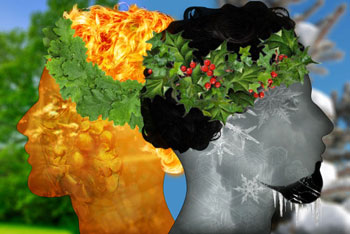 The Summer Solstice is the longest day of the year, and usually happens around the 21st of June. If you record the position of the sunrise or sunset over the year, you will see it track first one way, then the other. (See the Vernal Equinox for a more detailed explanation.) The solstices occur at the end of this progression, when the Sun turns around. At this point, the sun rises (or sets) in the same place on the horizon for five days, centred around the day of the solstice. The name comes from the Latin – sol meaning Sun and either “stare” or “sto” meaning to stand. In astrology this is when the sun moves into the sign of Cancer.
The Summer Solstice is the longest day of the year, and usually happens around the 21st of June. If you record the position of the sunrise or sunset over the year, you will see it track first one way, then the other. (See the Vernal Equinox for a more detailed explanation.) The solstices occur at the end of this progression, when the Sun turns around. At this point, the sun rises (or sets) in the same place on the horizon for five days, centred around the day of the solstice. The name comes from the Latin – sol meaning Sun and either “stare” or “sto” meaning to stand. In astrology this is when the sun moves into the sign of Cancer.
The nearest Christian festival is the Feast Day of St John, placed on the 24th of June. (This is usually the day that the Sun starts moving again after the Solstice.) It is an unusual day as it celebrates the birth of a saint, rather than the day they died, which is the case with most other saints. This fact provides us with a key to unlock a mythical cycle, that of the Oak and Holly King.
The Holly and Oak Kings are seen as two brothers who compete for the hand of a fair maiden – the Goddess. There is an archetype of the God having two sides, both bright and outgoing and dark and inward looking and together these work with the Goddess to provide fertility and to ensure life continues. The Oak King rules over the rising year, when the days are getting longer, from Winter Solstice to Summer Solstice. And the Holly King rules over the waning year, when the days are getting progressively shorter.
This cycle has been preserved and protected from Christianity by being hidden within other myths, such as those of Arthur and the Knights of the Round Table, or in Mummers' Plays. Summer Solstice marks both the height of the Oak King's powers, and the end of his reign. It also marks the beginning of the waning year, the time of the Holly King.
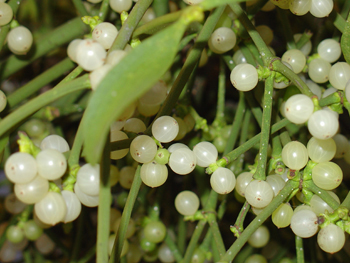
Like so much in the Wheel, this must be viewed as a tidal effect. It's not the case that the Oak King is switched off at the Summer Solstice, but rather that this is the peak of his effect, and from here onwards, he fades away. This gradual changeover is expressed in other myths which, for example, place the battle between Holly and Oak at Beltane. Sometimes the battle is seen as inconclusive and resulting in a wasting wound. This emphasises the slow, transitional effect of the changing energies.
The link between Summer Solstice and Cancer, a water sign, is interesting. There were many divination and fertility rituals across Europe from prehistory until very recently. The main feature of these rituals is that a cart wheel would be wrapped in hay, set alight and rolled down a hill. Usually there would be a river or the sea at the end of the hill.
A wheel that burnt brightly all the way to the river would be a sign of a good harvest to come. This is key, because this time of the year is when the Sun is at maximum strength and the most ripening takes place.
Although Asterix and Obelix is a children's cartoon, it does contain a seed of truth. In it the Druids collect mistletoe from the sacred Oaks at Summer Solstice in order to do magic. Mistletoe is a magical plant as it doesn't grow directly out of the earth, but hangs from a plant. In a sense, it lives between the earth and air. Also, this festival links together fire and water. So, together we have all four elements – fire, water, earth and air. This combination is what leads to maximum growth.
By their very nature, the solstices are turning points in the year. They were probably the first points noticed by ancient man and there are more monuments marking solstices than any other day on the Wheel of the Year. In early farming communities, they were key moments. The Summer solstice is the day when the spring is over and nature enters a ripening phase. It would have been a critical time, for fattening animals, swelling berries, ripening corn and drying hay meadows.
In terms of the Goddess, she is seen as being in the radiant, blooming phase of pregnancy. She is in the most bountiful phase of being a Mother, an aspect of the Triple Goddess who moves between the stages of Virgin, Mother and Crone.
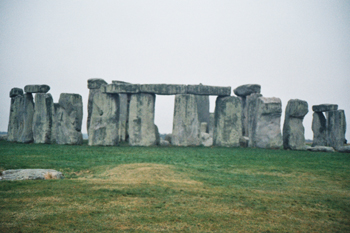
For colours and symbols, whether for decorating an altar or your home, there are two main themes. One is solar, so sun symbols, bright oranges and yellows are suitable. There are a lot of solar symbols from other cultures, including the swastika which was a sun symbol for thousands of years before the Nazis appropriated it. The other set of symbols is Oak leaves and prolific greenery. The Summer Solstice is famous in the UK for being the day when the modern Druids celebrate at Stonehenge. Druids take their name from the Oak Groves where they worshipped, according to the Romans.
Summer Fairs would have been a common feature at this time of year and still exist, often in the form of school and village fetes. These are usually held towards the end of June and into July. In ancient times they would have been a vital part of gathering the community together before the hard work of the harvest started. Now, they serve an equally important function in binding together communities. If you are working the Wheel with an Intent, or simply want to get in touch with the energies, this is a time of expansion. The sun is at its peak and all is about growth and fulfilment. This is a time to apply effort, knowing that in the months to come it will yield results when the harvest comes.
For food at this time of year we like to do a barbecue. Bonfires are a common feature to festivals of the Wheel, and were probably lit eight times a year. They appear to have survived particularly strongly around this festival. At the beginning of Summer, it is lovely to pay homage to these previous great fires with a simple barbecue or even a small fire.
So, at Summer Solstice, acknowledge that the Sun is at its peak and that the Oak King is reigning supreme. This festival is the gateway to the Summer.
Here are Jan's thoughts:
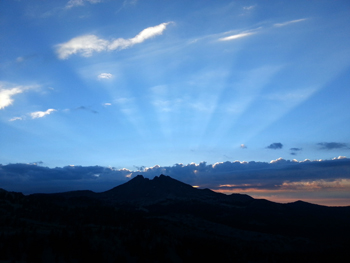 The Summer Solstice marks an important second highlight in our year as well as underlining the height of the Sun God’s strength and potency. For it is on this day every year that our High Priest renews his vows to his Station. This is important for every member of our working group, for his Oath dedicates himself in service of the Goddess Herself, and also to us as overall leader of our group. His strength of purpose and commitment have a “trickle-down” effect upon all of us. It is entirely fitting, in my mind, that such a vow should be sworn on this great day of light.
The Summer Solstice marks an important second highlight in our year as well as underlining the height of the Sun God’s strength and potency. For it is on this day every year that our High Priest renews his vows to his Station. This is important for every member of our working group, for his Oath dedicates himself in service of the Goddess Herself, and also to us as overall leader of our group. His strength of purpose and commitment have a “trickle-down” effect upon all of us. It is entirely fitting, in my mind, that such a vow should be sworn on this great day of light.
I love this ceremony – well, if I am entirely honest I love every ceremony for its different energy and influence upon me – but this one and the Winter Solstice stand apart for me in their total contrast. These are both “absolutes”, if you will. The Summer Solstice has a lazy energy to it, redolent with warmth and the promise of harvest. The Winter Solstice, on the other hand, acts like a reassurance of eventual re-awakening against a backdrop of darkness.
This year (2015) the Sun enters the sign of Cancer in the early evening of the 21st of June. We work at dawn on the 22nd (heavy dependence on reliable alarm clocks required here). We do not always work at dawn – and actually each time of day a group chooses to celebrate the Solstice bears a slightly different meaning. We tend to decide somewhere around Beltane what sort of year it has been thus far, and then set our working time to observe that.
The Summer Solstice is the day which marks the high point of light in the year. To work at dawn reaches out to harness this most powerful energy at its greatest possible extent in the year. Working at some random point during the day tends to have a more diffuse influence – we are simply giving thanks for the presence of this welcome power. Working after sunset though, serves as a lament for what is now becoming the fading of Solar impact upon our lives with this year.
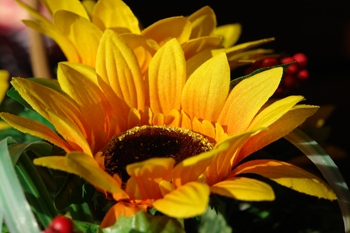
We go to the Hawk Headed Sun God Horus for this ceremony. The altar is golden yellow, and decorated with oak boughs and sunflowers, as well as yellow roses. The candles are also yellow. Some of us offer tokens and talismans for blessing during this ceremony, to capture for us the protective and energising forces. Traditionally used incense here is khyphi, and it’s my job to ensure we do not run out – a not-inconsiderable challenge since it takes seven years to properly mature – it’s a good thing I am psychic.
Some practitioners refer to this ceremony as “Litha”. And the Druid community usually refer to it as Alban Heffyn – this roughly translates to Light on the Shore. Ideally they would work in the half-world which always exists between land and water – so on the banks of a river, or on a beach. Often a bonfire is regarded as an essential part of the proceedings.
The prevalence of celebratory solar festivals attests very clearly to how much reliance and recognition our forefathers offered to the contribution of the Sun in everyday life. Most belief systems place the Solar God (usually, though there are also Goddesses) very high in their listing of deity. Some forms of worship were (and still are) completed dedicated to Solar exaltation.
One very simple method of celebrating this Solstice is by having a barbeque – especially if you do not particularly want to build a bonfire. This is a sociable Solstice – one where people come together prior to the coming harvest to give thanks for bounty and abundance, and is therefor an exceptionally good day to get together with friends and loved ones to enjoy the (hopefully) beautiful weather.
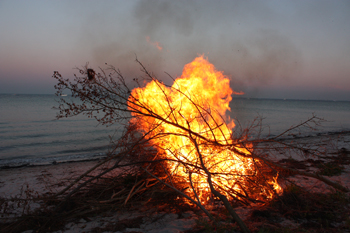
Myth and folklore abound about this Solstice, and also about the preceding eve, and the evening of the day itself, particularly in Britain and the rest of Europe. Midsummer’s Eve is considered to be a very fortunate time to try to divine your future love. If a maiden can pluck a perfect rose with her eyes shut and without shedding blood she will meet her true love by Midwinter. Often love potions were made on this night, and considered to have greater potency than those made at any other time of the year (be careful with love potions – they can have some very unfortunate consequences at times ;-)).
Casting a stone into the Solstice fire having charged it to that which you most deeply desire is said to draw that desire into your life – again be careful of this one, it can backfire badly. Scattering the cold ashes of the Solstice fire over your crops will guarantee a fine harvest for that season – I quite often do that and when I do it always works. You can use barbeque ashes, but ensure you avoid any which are splashed with fat.
You might also want to make your own protection amulet on this day. The easiest type is a pouch or bag. You can buy wedding favour bags, or sew your own using golden yellow felt. Place inside it a sprig of rosemary, three spikes of lavender flowers, 3 basil leaves and a single red carnation flower, then tighten the pouch by pulling its drawstring and tying it, or by sewing up the open side. Carry this with you, or hang it over the door of your home to attract the sun’s protection. It will work until Midwinter, at which point it needs to be buried, and you have to start again.
Whatever you decide to do with your Summer Solstice, at the very least, take a few moments out to contemplate what life would be like without the sun in the sky. And spend just a little while thinking about the power of this day.
